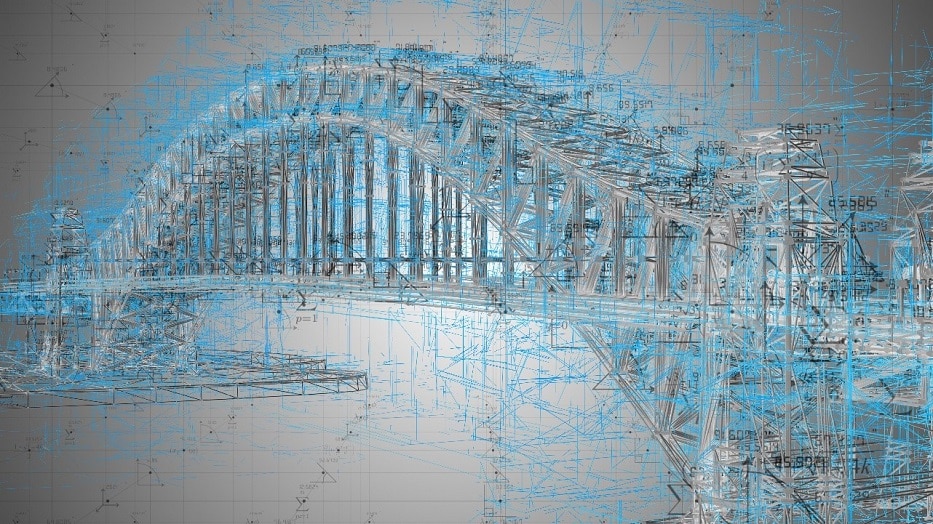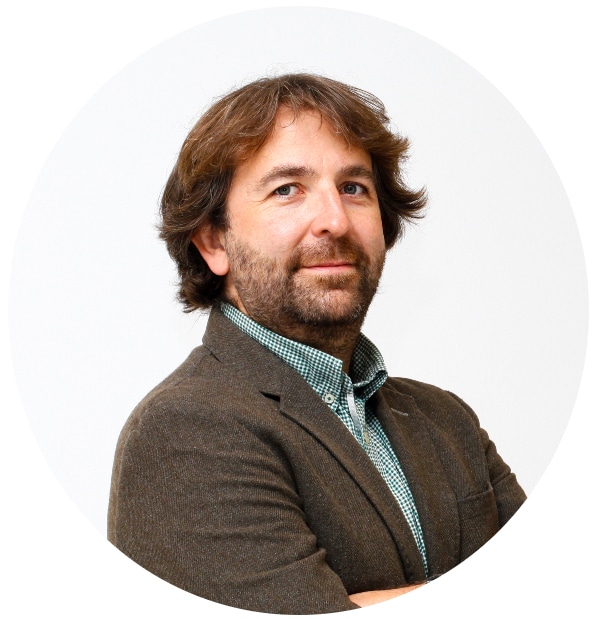Julia Maria Gomez de Avila Segade | 13/12/2022
Major infrastructure planning also carries immense risks, especially in the construction and maintenance phases. Both industry and society are very involved in reducing the loss ratio, so in recent years, cutting-edge technologies have been incorporated aimed at the prevention, prediction and mitigation of incidents. David Díez, Technological Innovation Consultant at the Instituto Tecnológico de Aragón (ITAINNOVA), an expert in R&D+I projects in the area of construction and public works, tells us about it.
The construction sector is historically linked to high risk exposure, both in the construction and maintenance phases. This threat is greater for major infrastructure and can affect both operators and users. Major companies in the industry are increasingly involved in mitigating these hazards, and one of the main avenues towards this objective is being supported with technological innovation. This is how David Díez, Consultant of the Instituto Tecnológico de Aragón (ITAINNOVA) explains it, from where he coordinates new R&D+I projects in this area. “All companies have evolved in this regard, and they have risk management departments and safety supervisors. Many of them also have specific ERP-type tools —Enterprise Resource Planning—, with which they coordinate all documentation and information related to the work,” he explains.
One of the big difficulties in dealing with risk prevention and prediction tasks is that there is a great variety of them, some related to the hazards involved in the actions taken and others related to the demands of the project, the latter linked to “very tiring work, especially in production environments”. Major infrastructure typically gives rise to particularly sensitive contexts. As an example, the ITAINNOVA expert talked to us about tunnels, where work is carried out under adverse conditions that, until recently, were difficult to control. “Continuous air quality monitoring is necessary, from which it can be determined if there is any hazard that requires corrective action. Equipping the entire construction with sensors would be unfeasible and, therefore, there are methodologies and technologies that allow us to predict if there are any unsafe work areas within the infrastructure,” he warns.
Industry transformation
In recent years, and thanks to technology, building major infrastructure has undergone a major transformation, both in the construction and maintenance phases. On the one hand, there are automated elements that allow machines to do the most hazardous jobs, which previously involved one or more people who were exposed to possible injuries or accidents of varying degrees of severity. “Robotics are another safety aspect in this type of work because they perform repetitive or arduous tasks. Let’s take physical overexertion as an example. Previously there were operators lifting heavy weights or moving in environments exposed to possible collapses or critical failures. That can now be done by robots or automated machines,” he says. Precisely one of the solutions capable of carrying out these types of actions has been developed at the Instituto Tecnológico de Aragón. “We have a project where a dumper, which is a kind of small-sized truck, goes through the tunnels in which some type of controlled explosion has been carried out and decommissions the area completely autonomously. Until now, an operator personally managed these types of mechanisms with the inherent sprinkling that this entailed.”
Another of the most important lines of innovation in risk prevention is characterized by measurement mechanisms. Thanks to sensors, the department in charge can carry out a detailed follow-up of both workers and infrastructure, also powered by Artificial Intelligence systems. “We’ve started working on predictive models, with artificial intelligence techniques. Sensors, cameras or incident detectors generate a large amount of information that creates a type of black box whereby a large amount of unstructured variables of different origin converge, and with which we can work to establish patterns or predictions,” he says. This monitoring could even help combat incidents as difficult to trace as bad practice. “Hard hats, for example, are incorporating accelerometer or GPS sensors, which we can use to deduce if they have been dropped on the ground or are not being used.”
“We’ve started working on predictive models,
with artificial intelligence techniques”
When we talk about vast infrastructure, the use of sensors can only be partial, and in order to provide information to predictive models, as David Díez explains to us, so-called ‘virtual sensors’ have been developed, through which we are “able to simulate very large works with computational models, making discrete measurements supported by digital duplication. With this, we are able to predict in near real time what the behavior of an item of infrastructure will be. For example, predicting when it will fail or what the concentration of carbon monoxide or dust in suspension, very dangerous particles in confined environments, will look like.”
Optimizing infrastructure operability
All these technological advances have not only been applied to the construction phases, they have also improved the operability and maintenance of essential infrastructure such as major logistics or power generation construction. “Most infrastructure already uses sensors, and with this tracking we are able to predict what the lifespan will be and detect efficiency levels,” says Díez. This is achieved through the variables obtained from SHM (Structural Health Monitoring), which carefully tracks the status of structural and material properties of major engineering structures such as bridges or roads, allowing us to “plan their maintenance and find methods to anticipate critical damage.” This structural status tracking is also done using novel automated technologies. “Drones are able to monitor infrastructure with cameras or other sensors for cracks or malformations, alerting one to potential failures,” he says.
Big data, challenges and opportunities
All of these technological advances result in an immense amount of information being gathered, both by real-time sensors and by the algorithms that underpin predictive models. David Díez recognizes that, while more and more progress is being made in the effective use of this data, still very little is being made use of. “We’re working on these topics, Big Data, Machine Learning or Deep Learning techniques, but we haven’t yet exploited their full potential. We could be able to establish much more advanced detection patterns,” he says.
Without a doubt, the search for these algorithms and the use of virtual spaces for planning and executing large building projects is challenging for the industry, but also a challenge in terms of safety. “These sensor networks could very well be attacked or breached by someone who has some kind of illegitimate interest,” warns the expert. He recognizes that, although we are faced with a complex issue, there is almost parallel progress in the development and defense of technologies, mainly from what we call “the obfuscation and encryption of information, i.e. ensuring the immutability and reliability of the data and the protection of all the assets involved.”
Apart from safety, investment and development efforts are clearly aimed at one objective: mitigating environmental impact. David Díez points, in the case of large-scale construction, to waste management and the integration of renewable energy “or to summarize it, to the circular economy and the energy transition: that is the main challenge we are all focused on,” he concludes.
Article Collaborator:
David Díez is a n Industrial Engineer from the University of Zaragoza and has a Master’s degree in Organization Management and a Master’s degree in Innovation Management.
He is currently responsible for the customer relationships and business development in the construction, public works and mining sector at ITAINNOVA. He has participated in more than 50 construction-related R&D+I projects and belongs to a group of consultants accredited by the MINECO for the performance of digital transformation consulting.
Construction Expert 4.0. He is also the Spanish representative in the Digital Task Force of the Committee for European Construction Equipment, a Member of the Permanent Commission of the Spanish Construction Technology Platform (PTEC) and Coordinator of the Working Groups on ‘Blockchain’ and ‘Machinery under construction’, a Member of the Steering Committee of the National Association of Public Works Machinery Manufacturers, Construction and Mining (ANMOPYC), a Member of the Jury for the Innovation Awards of the International Public Works, Construction and Mining Machinery Show. He is a collaborator and speaker on various media and industry forums.
Keep reading… Fatigue in Materials, A Key Factor in the Lifespan of Structures






